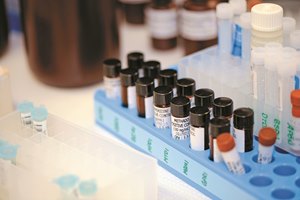NY Examines Equine Drug Testing at Recent Assembly


The New York State Assembly met Dec. 19 to examine the effectiveness of the state's current system of testing and prevention for equine doping.
Since the implementation of the Horseracing Integrity and Safety Act, Thoroughbred drug testing no longer lies in the hands of the New York State Gaming Commission, however, the state is still responsible for performing drug testing on the jurisdiction's seven harness tracks.
Several professionals testified at the meeting, including Dr. Scott Palmer, the equine medical director of the NYSGC. Although a representative from HISA was not present at Thursday's meeting, Palmer praised the organization's uniformity in drug testing.
Harness racing across the country does not adhere to a single regulatory body, and drug testing is still conducted through the individual state.
Jeffrey Cannizzo, the New York Racing Association vice president of government affairs, released written testimony coinciding with the meeting, speaking to the relationship between NYRA and HISA:
"Since its launch, HISA has formulated and applied rules and safety standards that have successfully improved equine safety. NYRA will continue to advocate for the importance of national policies designed to protect equine athletes in competition and protect the integrity of the sport," he wrote.
He went on to commend the work of HISA in reducing in equine fatalities and to "move the sport forward."
Palmer told the committee, "Effective medication control in horse racing requires multiple tools. Drug testing, no matter how sophisticated, is only one of the tools. The other form is boots on the ground, in the form of trained investigators with the skills to gather intelligence and the ability to interact and understand the practices in effect at racetracks in New York."
Palmer noted that the 2019 federal indictments of trainers Jason Servis and Jorge Navarro were achieved largely through wiretapping, and not drug testing.
While the Horseracing Integrity and Welfare Unit, HISA's enforcement arm, continues its responsibilities with Thoroughbreds, Palmer said New York remains committed to focusing on drug testing Standardbred racehorses. As of 2024, New York currently tests for 470 different substances in racehorses.
"Previous successes notwithstanding, the detection of unknown and previously undetectable substances remains a formidable challenge," Palmer said. "For example, the microdosing of horses with performance-enhancing drugs is a well-known practice both in humans and horses. And it is extremely difficult to detect. Emerging detection in this field includes biomarkers and the use of metabolomics, the study of small molecules commonly known as metabolites in the body as well as the presence of antigens and anti-drug antibodies for impermissible substances. The use of new drug-detecting technologies such as the ion mobility mass spectrometer will assist with the detection of substances not detectable with conventional targeted testing."
Palmer called the mass spectrometer, a $600,000 piece of equipment, a "very exciting development" in drug testing and detection.
Three speakers testifying, Joseph Faraldo, president of the Standardbred Owners Association of New York, Sarah Burger from the Saratoga Harness Horseperson's Association, and Dr. Michael Lindinger of The Nutraceutical Alliance, advocated for prerace testing in Standardbreds.
Lindinger argued that testing for elevated TCO2 levels, caused by the practice of "milkshaking" in horses, was currently outdated and limited, with regulations only calling for postrace testing. Milkshaking is the process of alkalizing the blood through the use of sodium, potassium, calcium, or magnesium, which produces a performance-enhancing effect. The doping is generally administered one hour before the horse runs, which would make prerace testing the animal 30 minutes prior to competition an effective tool.
Prerace testing, which was utilized successfully in New York on select occasions at harness tracks in 2024, proved very effective in exposing horses doped with TCO2.
